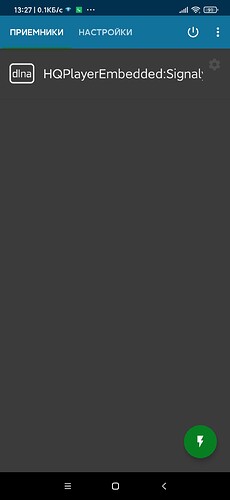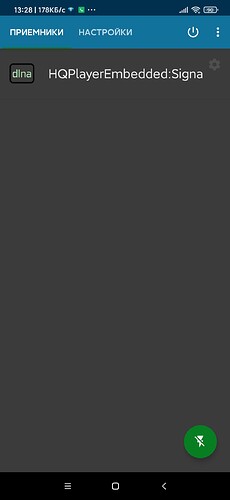Yes, I’m trying to find information how to implement it.
But still I liked how it works is clearly better than the method through the brake Airmusic.
Now I have 2 tasks and life has improved:
- How to register in order to enter the SPDIF \ linear is turned on by default, and not activate it each time through the Web Interface. But when the UPNP signal enters the entrance switches to UPNP. It is reproduction and not just when the source connected to the UPNP. If there is no reproduction for UPNP, then the sound comes from SPDIF
HQPlayerd.xml has an attribute: script parameter
A Script or Command to Run When This Input Is Selected.
As I understand it, this is what you need to automatically use SPDIF when loading the system.
Found in the archives HQPE
In the falle hqplayerd.xml-rme
script="amixer -D hw:HDSPMx sset 'System Clock Mode' 'AutoSync' ; amixer -D hw:HDSPMx sset 'Preferred Sync Reference' 'SPDIF' ; amixer -D hw:HDSPMx sset 'S/PDIF Input' 'Coaxial'"/>
and in ordinary hqplayerd.xml
post_script="amixer -D hw:CARD=USBStreamer sset 'miniDSP Clock Selector Clock Source' 'miniDSP TOSLINK Clock'" pre_script="amixer -D hw:CARD=USBStreamer sset 'miniDSP Clock Selector Clock Source' 'miniDSP Internal Clock'" samplerate="192000"/>
But I don’t understand if in these scripts a hint of automatic involvement of a particular entrance …
- My system starts simultaneously with the router to which HQPE is connected over the network, but HQPE starts faster than the router raises the network, so the UPNP does not see, the Ethernet wire distorting helps, and then the UPNP receiver is seen.
Actually, the question is how to write a script and where to insert in order to restart the network after a certain period of time after the start? I tried different commands of restarting the network, but they do not work.
Or maybe it is necessary to execute the command of the automatic reinforcement UPNP
Tell me how best to do it?
Thanks to everyone)

